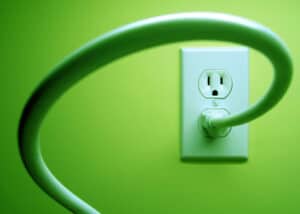Introduction
Following a tenant’s move out, landlords conduct inspections of the unit to document any damages for which they may need to deduct funds from their security deposit. Tenants are usually completely moved out of their property at the time of the inspection, but sometimes they will request an early move-out inspection so they can be present when it is conducted. Some tenants may make this request because they want to ensure any deductions that the landlord takes out are fair.
Below are some of the main considerations when deciding whether or not you should allow early move-out inspections as well as some general tips for conducting these inspections.
Table of Contents
Things to Look for in a Move-Out Inspection
Move-out inspections give you time to assess the property and plan for any needed repairs or remodeling before the next tenant moves in. It also gives you a chance to document and deduct from your prior tenant’s security deposit if needed.
So, how long do property inspections take? The answer depends on how thorough you are. It’s best to be meticulous to ensure you don’t end up paying for something you could’ve charged a tenant for due to their neglect.
It’s important to note that you can only charge for damages beyond normal wear and tear. Normal wear and tear can include nail holes, normal wear of kitchen appliances, or small amounts of discoloration or stains on the flooring or carpet. Damage beyond normal wear and tear that you can deduct for would include broken windows, large holes in the wall, dents in the floor, or stubborn odors like smoke.
Should Landlords Allow Early Move-Out Inspections?
Should you allow an early move out inspection?
Tenants will still be partially living in their unit at the time of your inspection if you do it early. Moving boxes and decorations may interfere with your ability to be as thorough as you’d like, and simply the tenant’s presence could hinder how you usually conduct your inspections. It’s easy for a tenant to strategically place objects in front of places that may have damage, and having to remove each object or decoration is tedious. That’s why it’s best to politely decline when your tenant asks for an early move-out inspection.
IInspecting after the tenant has moved out is much easier for you as the landlord, and it ensures that you can do a full inspection. Also, it’s important to note that you should never refund a tenant’s deposit until you’ve documented all damages and the tenant has fully moved out. It’s possible that the tenant was hiding damage – such as extreme growth of mold on the walls and ceilings – or created new damages after being refunded their deposit. This then means that you, the landlord, will be responsible for paying for those new issues, by hiring experts in mold testing in Clive, IA, or whatever the issue you’re facing is.
Be sure to check your state’s laws to see how many days you have following your tenant’s move-out to refund their deposit. Most states allow landlords around 20 to 30 days after lease termination to return the remainder of the deposit.
Alternatives
Tenants may ask, do you have to be present for an apartment inspection? From a tenant’s point of view, they may think it’s a good idea for them to be present during the inspection to make sure they aren’t charged for something that is unfair. So, what can you do to make them feel secure in an inspection that happens following their move-out?
Offering a preliminary walk-through of the unit oftentimes will soothe these fears. The landlord and the tenant will walk through the property discussing prior damages and consulting the move-in checklist. If you discuss everything that they feel they should not be charged for (damages caused by prior tenants) and agree, tenants simply have to follow the small cleaning tasks for move-out to be entitled to their full security deposit if there are no other glaring issues.
Conclusion
Tenants are entitled to feel secure that landlords are not going to charge them unnecessary fees after move-out. While it’s not advised to allow early move-out inspections, offering a preliminary walk-through and talking through any existing and new damages can help your tenants feel more at ease, since they know what to expect when they receive the remainder of their deposit.












